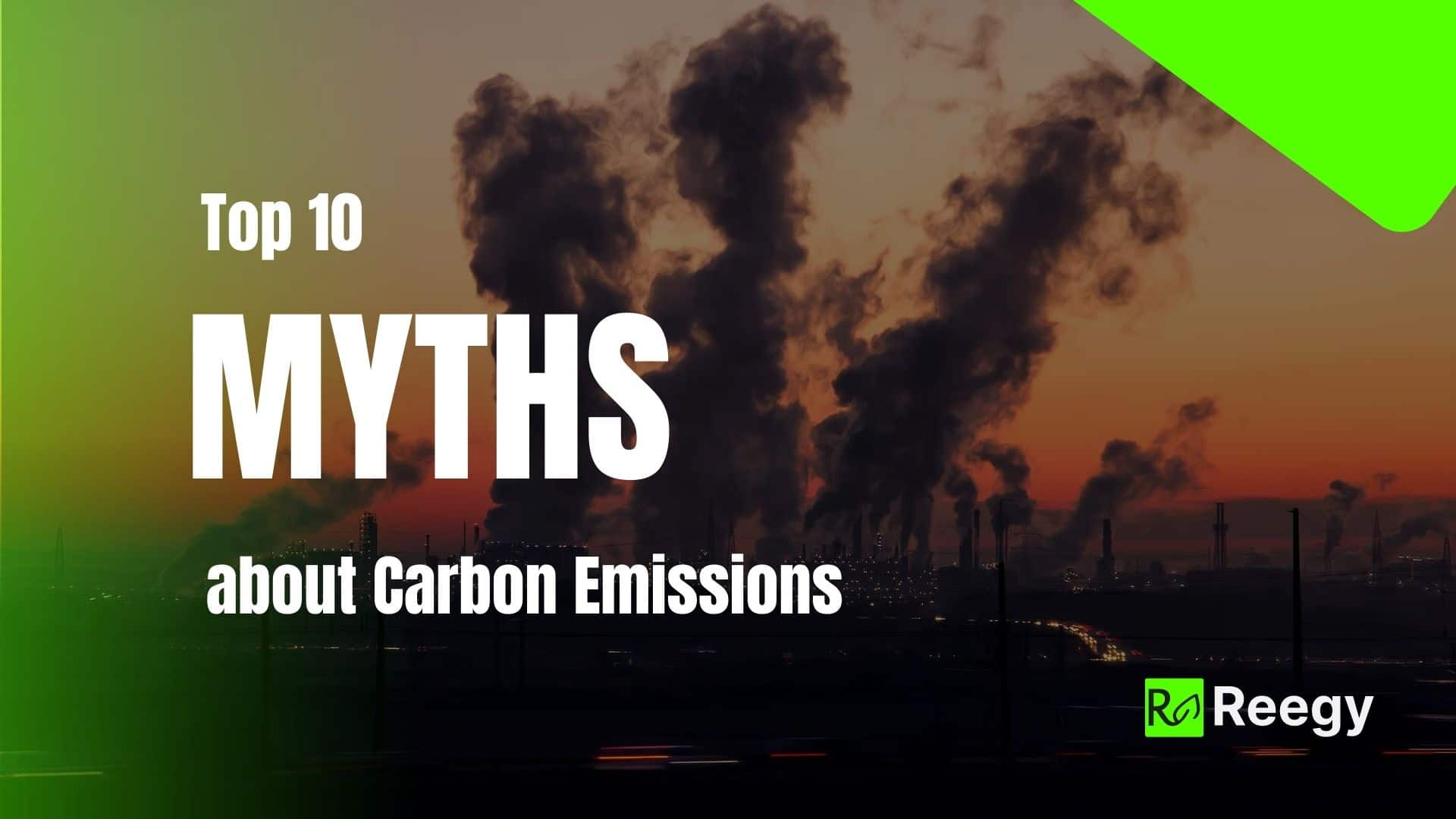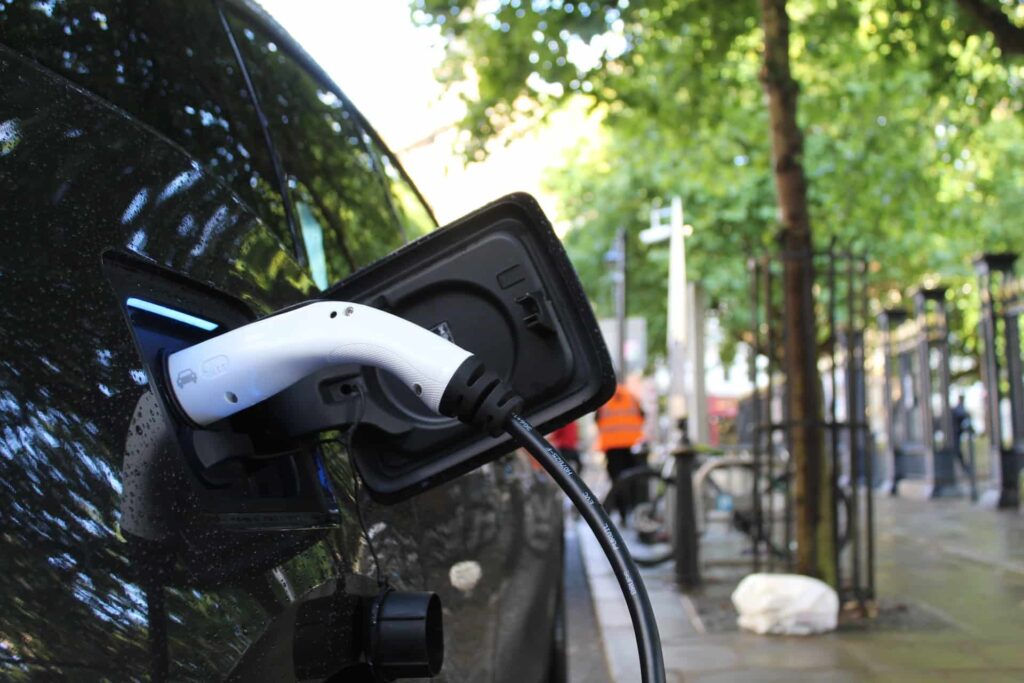
When it comes to carbon emissions, there’s a wealth of information out there. By now, not a day seems to go by without the word “climate change”, “carbon emissions”, or “Net Zero” being thrown around.
However, there are some misconceptions out there about carbon emissions that often turn into frustration when faced with them.
As businesses globally pivot towards a more sustainable model, understanding the intricate details of carbon emissions becomes paramount.
Let’s look at the top 10 myths about carbon emissions in more detail:
1 Carbon emissions are only caused by heavy industry
It is true that the 100 largest emitters in the world account for nearly 80 percent of global greenhouse gas emissions.
However, while oil & gas, transportation, manufacturing, and heavy industry are major contributors to global carbon emissions, there is more to it.

A holistic approach to carbon accounting covers everything from deforestation, agriculture, energy usage in homes and offices, waste decomposition, and even the foods we eat. For businesses, this means considering the end-to-end carbon footprint of your products or services, not just the obvious culprits.
2 Buying carbon offsets makes a company carbon-neutral
Carbon offsets by means of investing in reforestation or other projects is great and we love it.
In fact, we believe every company should do so no matter how large their emissions.
However, Fact Check: While carbon offsets are valuable tools to support sustainability initiatives, they shouldn’t be seen as a “get out of jail free” card. True climate action involves reducing actual emissions rather than just offsetting them.
3 All greenhouse gases are the same
While this post is aptly referencing “carbon”, not all greenhouse gas emissions are created equal.
Carbon dioxide gets most of the press, but there are others like methane, nitrous oxide, and fluorinated gases that can have a much larger warming potential over time. This makes it crucial for businesses to account for and mitigate all types of emissions.
Check out our guide to greenhouse gases to find out more!
4. Misconception: Renewable energy is always carbon-free
Clean energy is the single most important factor that will help us achieve global Net Zero emissions. Renewable energy sources used today like solar, wind, or hydropower are amazing pieces of technology that we need way more of.
However, while renewables are key to a sustainable future, the production of solar panels, wind turbines, and batteries often involves significant carbon emissions.
Moreover, they also contribute to the depletion and shortage of rare earth metals or cause significant land usage.

Nevertheless, renewable energy is the key to a greener future and still much better than fossil fuels and other energy sources.
A climate management software like Reegy can help you quantify your carbon emissions even from renewable energy sources easily!
5 Only big corporations can make a real impact.
Again, yes it is true that most carbon emissions are caused by big corporations, and that will probably never change.
However, small businesses and individuals play a crucial role in the fight against climate change. Every decision to reduce, reuse, or implement eco-friendly practices matters. Our behavior as consumers directly influences the decisions made by these companies.
Only buy from those who actively take climate action and act to preserve the environment!
If you’re working from your home office, even small gestures like reducing paper waste or using energy-efficient lighting make a difference.
Here are 10 more tips to reduce emissions when working from home!
6 Carbon emissions don’t influence the climate
One only needs to look at certain politicians to hear things like “If it’s cold outside, global warming isn’t real.” or “A snowstorm in April? Climate change must be a hoax!”
Scientists have proven over and over and over again that climate change is real and human activities are a SIGNIFICANT cause of it.
You can read some really good posts about it on the websites of National Geographic, NASA, the US government, and the UN, just to name a few.
Remember, there’s a difference between weather and climate. An unusually cold day or week doesn’t negate the long-term trend of increasing global temperatures.
7. Carbon emissions in my country are not as large as country X’s, so we don’t need to do as much
Sigh…another frequent misconception is that just because the carbon emissions in another country are high, there is no need for the rest to decrease their carbon footprint.
China is by far the largest emitter in the world and, therefore, many conservatives often like to point out that they should be the only ones focusing on lowering carbon emissions.
However, this neglects how our worldwide economy is interlinked and everyone is influenced by everyone else.
China is responsible for the majority of the chip and electronics production in the world. Naturally, this creates a gigantic carbon footprint. However, these devices are shipped to other countries to be used there.
Supply chains are interlinked and we all need to reduce our emissions to battle climate change.
8 Reducing carbon emissions means our wealth decreases
All those investments in renewable energy, getting rid of fossil fuel-powered cars, and reducing our air travel surely means we are going to a big global recession, right?
We’re happy to say, that’s not correct.
The entire point of innovation is and has always been, to increase global prosperity and the advancement of the human race. Battling climate change by introducing low-carbon tech and changing our old ways is just the same.

The rise of electric vehicles – albeit faced with scrutiny over the use of lithium cells and safety concerns – has introduced autonomous driving, more accessible tech, and lower emissions all at the same time. And while EVs are not yet affordable for everyone, they will in time.
The same is true for a plethora of other technologies, from recycled plastics to low-carbon cement.
9 Carbon emissions are a modern problem
While the Industrial Revolution ramped up carbon anthropogenic (human-caused) emissions exponentially, humans have influenced greenhouse gas concentrations for thousands of years, mainly through agriculture and deforestation.
Fewer trees means less captured and stored carbon. Meat production and agriculture, as we saw above, is a major source of global carbon emissions.
Therefore, it should come at no surprise that climate change is not a totally “new” phenomenon.
10 Reducing carbon footprints is too expensive
Green solutions surely come with a heavy price tag.
Yes, innovation comes at a price and in the short run, some eco-friendly adaptations might seem pricy. Some of them are also plain inconvenient for many of us.
Higher gas prices, increased cost of energy, and we might not be able to take planes quite as often as. we like.
However, long-term benefits, like reduced energy bills and health costs, often mean that going green saves some green! Hrr Hrr Hrr.
On a serious note, the estimated cost of climate change – if not combatted- goes in the trillions. Climate-caused natural disasters like Hurrican Katrina or the flooding of cities at sea level have already surpassed the $300 billion dollar mark in the past 20 years.
Investing in climate-friendly solutions, like Reegy’s Eco Hub platform, renewable energy, and others are but a small fraction of that.
Reegy is a complete software solution for ESG & Carbon Footprint Management. Our Reegy Eco Hub enables enterprises, financial institutions and governmental organizations to manage their climate action in one central location along the entire value chain. Track, measure, reduce, and offset your carbon emissions, disclose them to regulators, stakeholders, and customers and lead your company to Net Zero on autopilot!